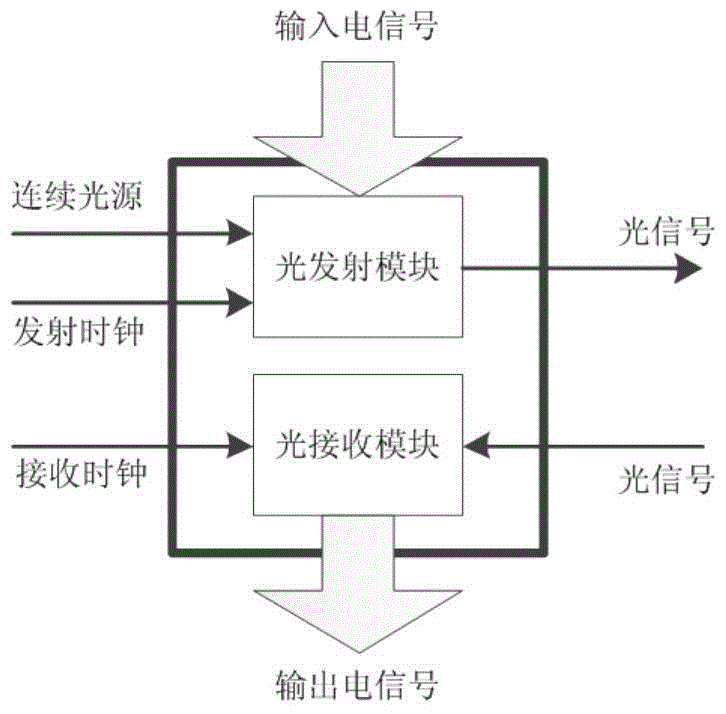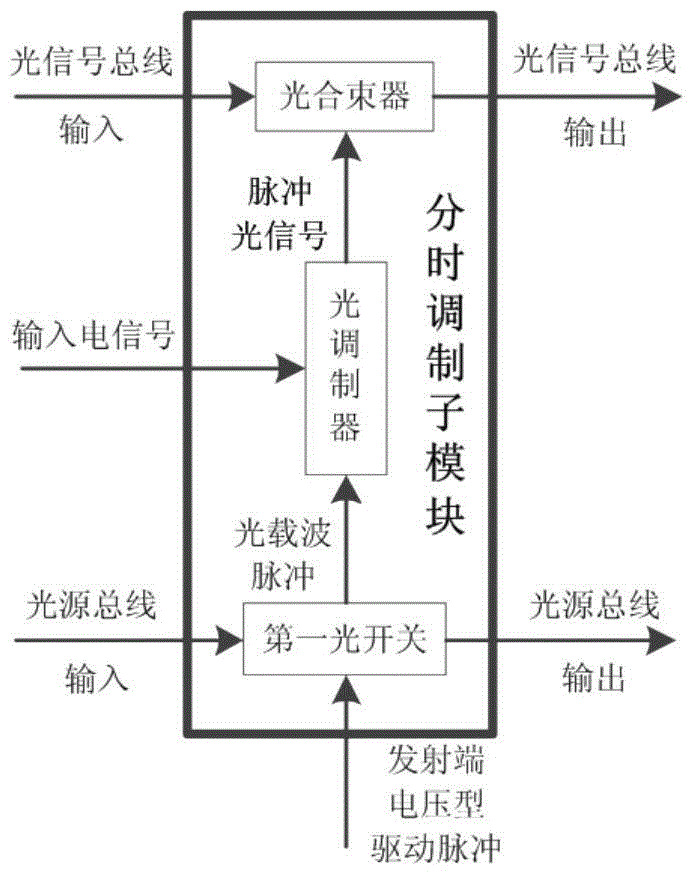An Optical Transceiver with Serial-to-Parallel Conversion Function
A technology for optical transceivers and conversion functions, which is applied in the field of optical transceivers with serial-to-parallel conversion functions, and can solve problems such as limiting communication carriers, high power consumption, and restricting processor chip interface bandwidth.
- Summary
- Abstract
- Description
- Claims
- Application Information
AI Technical Summary
Problems solved by technology
Method used
Image
Examples
Embodiment Construction
[0029] The following is an example of a 20-fold frequency optical transceiver with a main frequency of 2.5GHz, i.e. f=2.5GHz, τ=20ps, N=20, the optical transceiver containing the serial-to-parallel conversion function of the present embodiment is described, wherein the numbers are all from 0 to start.
[0030] 1. The main frequency of the optical transceiver is 2.5GHz, the transmit clock and receive clock frequency is 2.5GHz, and one beat is 400ps. The frequencies of the input electrical signal and the output electrical signal are also 2.5 GHz, the input electrical signal is aligned with the rising edge of the transmitting clock, and the output electrical signal is aligned with the rising edge of the receiving clock. The optical serial signal output by the optical transceiver is 20 times the main frequency of 2.5GHz, that is, 50GHz.
[0031] 2. The optical carrier adopts 1550nm infrared light, which is provided by an off-chip distributed feedback Bragg grating (DFB) laser, an...
PUM
 Login to View More
Login to View More Abstract
Description
Claims
Application Information
 Login to View More
Login to View More - R&D
- Intellectual Property
- Life Sciences
- Materials
- Tech Scout
- Unparalleled Data Quality
- Higher Quality Content
- 60% Fewer Hallucinations
Browse by: Latest US Patents, China's latest patents, Technical Efficacy Thesaurus, Application Domain, Technology Topic, Popular Technical Reports.
© 2025 PatSnap. All rights reserved.Legal|Privacy policy|Modern Slavery Act Transparency Statement|Sitemap|About US| Contact US: help@patsnap.com



